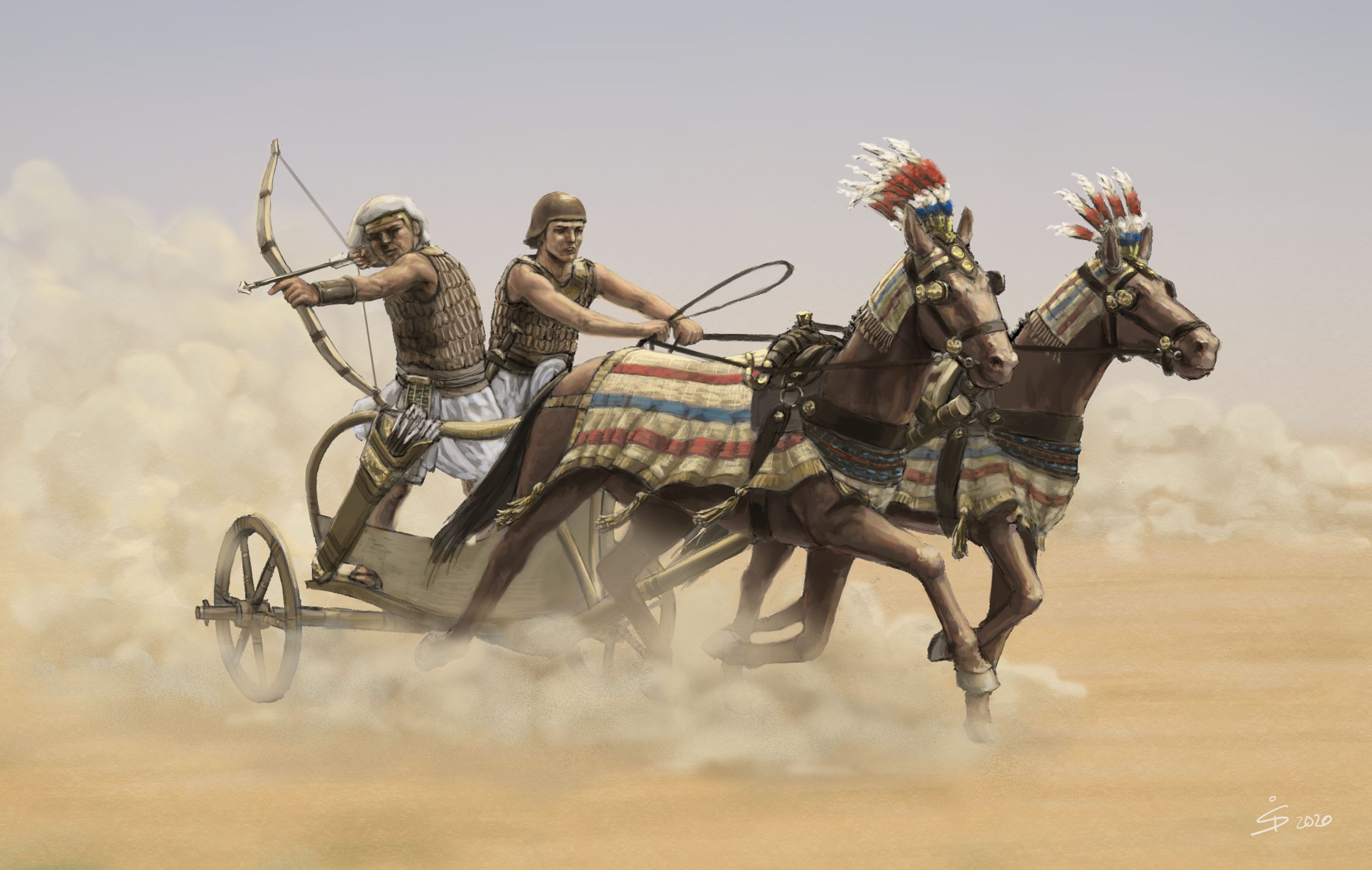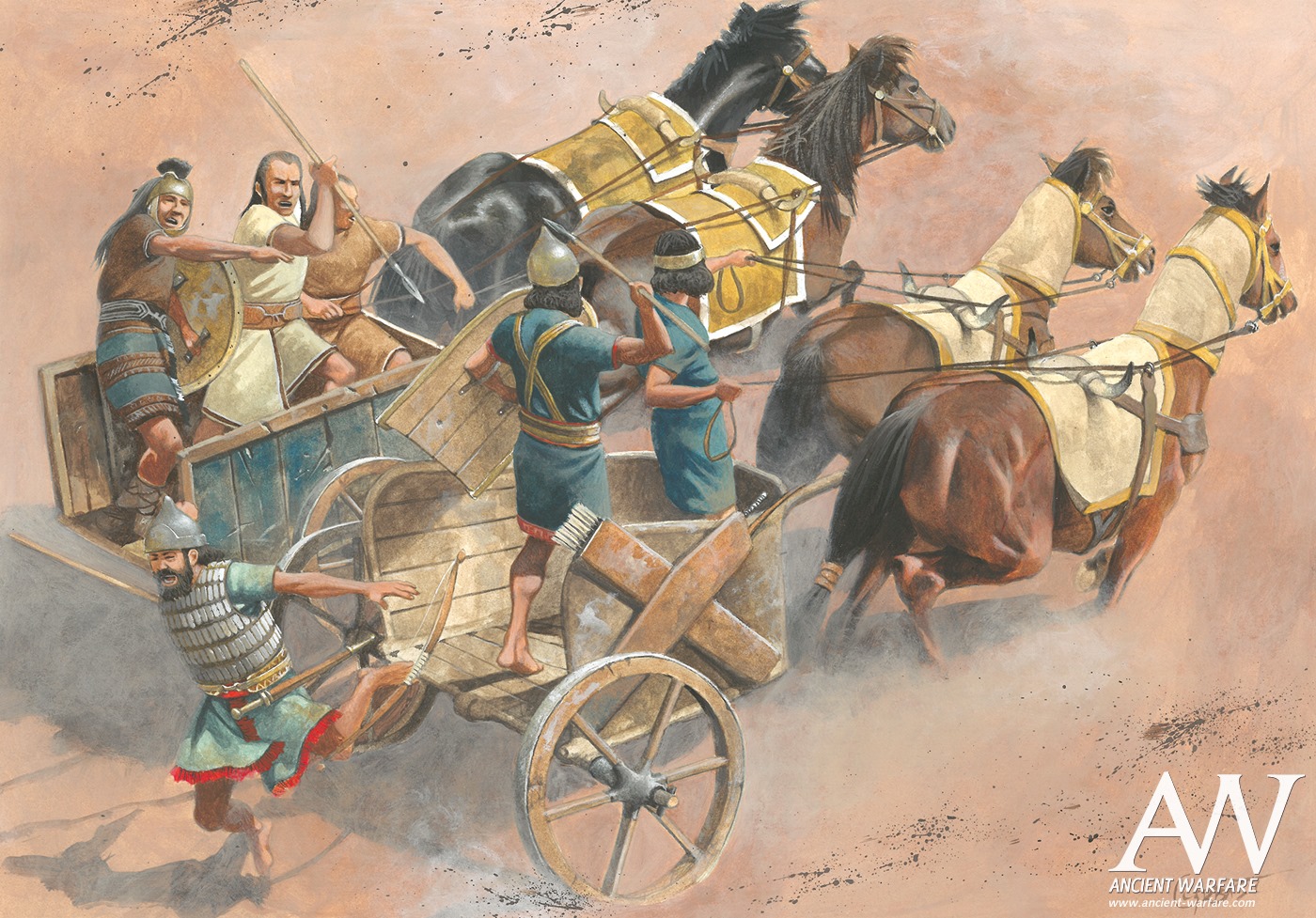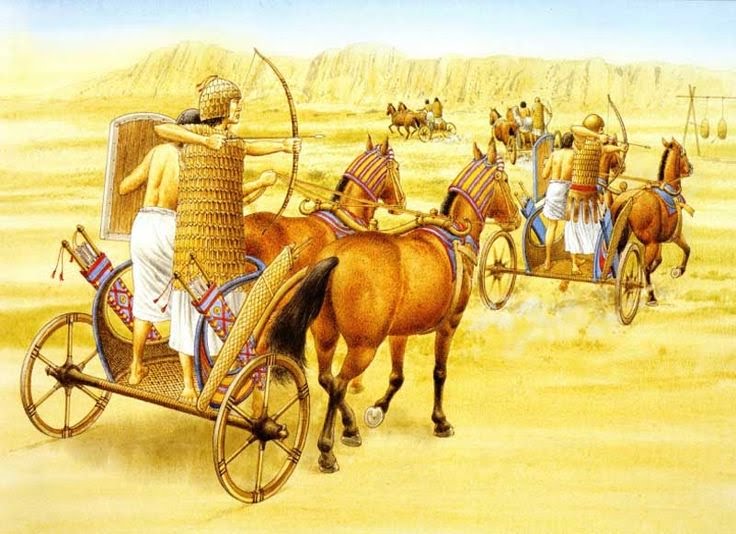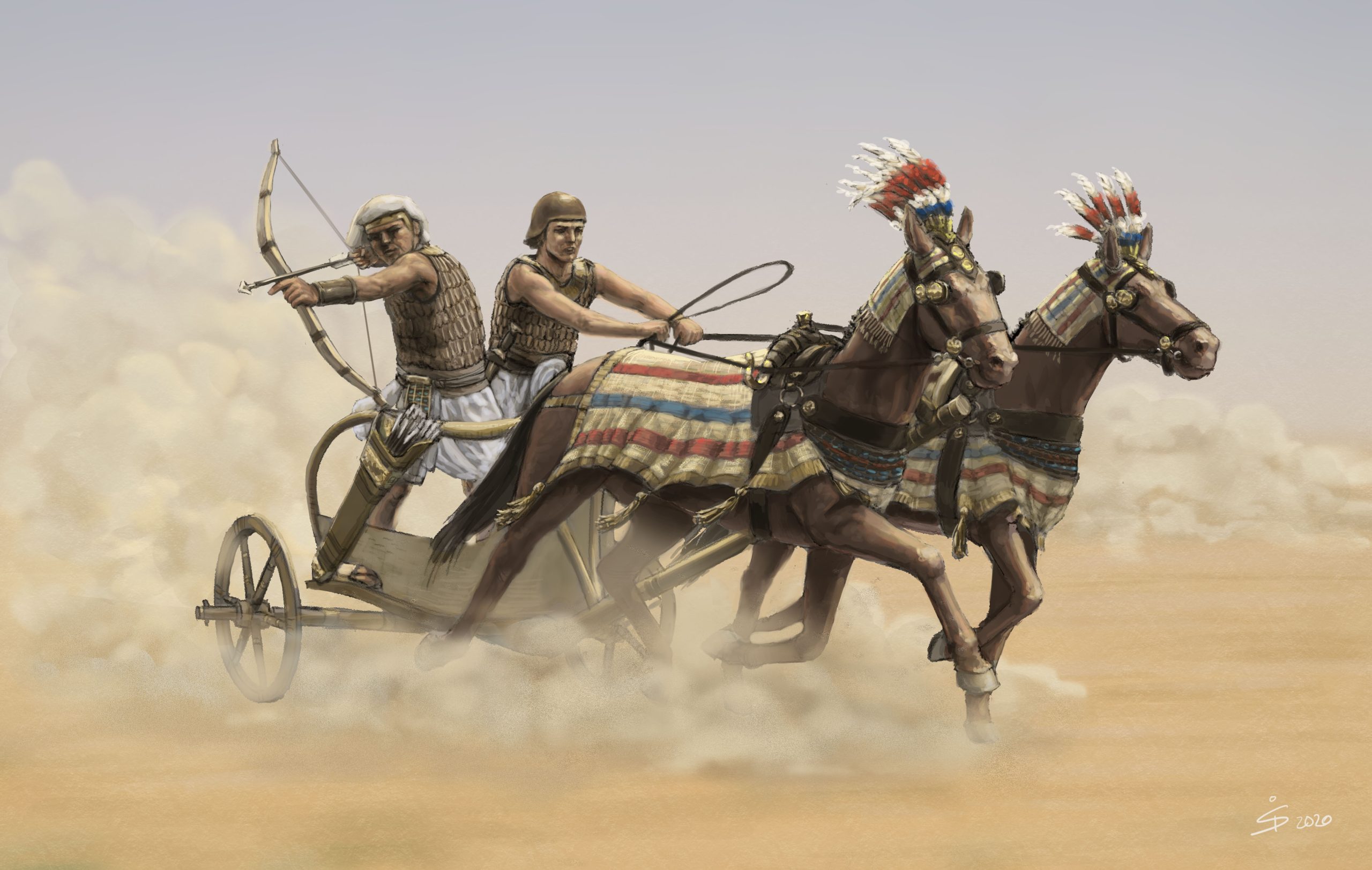Imagine the thunder of hooves, the clatter of wheels, and the roar of warriors as chariots charge across the battlefield. This was the reality of ancient warfare, where chariots were not just tools of war but symbols of power, innovation, and elite status. From the deserts of Egypt to the plains of Mesopotamia, chariots transformed the way battles were fought and won.

Egyptian War Chariot in Action (Illustration)
Credit: World History Encyclopedia
The Origins of the Chariot: From Utility to Warfare
The chariot’s story begins around 3000 BC in Mesopotamia, where early two-wheeled vehicles were used for transport and ceremonies. These early chariots had solid wheels and were pulled by oxen, making them slow and cumbersome. But by 2000 BC, technological advancements like spoked wheels and lightweight designs turned chariots into swift, agile machines. The introduction of horses as draft animals was the final breakthrough, allowing chariots to dominate battlefields.
By the time of the Hyksos invasion of Egypt in the 17th century BC, chariots had become a military game-changer. Their speed and mobility gave armies a tactical edge, enabling them to outmaneuver and overwhelm enemies. The Hittites, Assyrians, and Egyptians all adopted chariots, using them to build vast empires.

Chariot Warfare in the Ancient Near East (Illustration)
Credit: World History Encyclopedia
Chariots in Battle: Tactics and Key Engagements
One of the most famous chariot battles was the Battle of Kadesh (1274 BC) between the Egyptians and Hittites. Egyptian chariots, manned by a driver and an archer, raced across the battlefield, raining arrows on the enemy. The Hittites countered with heavier chariots designed to break through enemy lines.
At the Battle of Megiddo (1468 BC), Egyptian Pharaoh Thutmose III used chariots to flank his enemies, securing a decisive victory. These battles showcased the chariot’s versatility: it could be used for ranged attacks, flanking maneuvers, and even psychological warfare.
Technology and Innovation: Building the Ultimate War Machine
What made chariots so effective was their engineering. Lightweight materials like wood and leather reduced weight, while spoked wheels improved speed and durability. Composite bows, carried by chariot archers, allowed for deadly precision at long range.
Chariots also influenced the development of combined arms tactics. They were often used alongside infantry, creating a synergy that maximized their impact. This integration of forces laid the groundwork for modern military strategies.

Hittite Chariot Warfare
Credit: Gordon Doherty
Chariots in Society: Symbols of Power and Status
Beyond the battlefield, chariots were symbols of prestige. Reserved for kings and nobles, they were used in royal processions, hunting expeditions, and religious ceremonies. In ancient Egypt, pharaohs were often depicted riding chariots, emphasizing their divine authority.
Art and literature from the time, such as the Egyptian “Poem of Pentaur,” celebrate the chariot’s cultural significance. These depictions remind us that chariots were more than war machines—they were icons of civilization.
The Legacy of Chariots: From Ancient Warfare to Modern Tactics
Though chariots eventually faded from the battlefield, their legacy endures. The principles of speed, mobility, and combined arms that defined chariot warfare still influence modern military tactics. Tanks, drones, and other vehicles owe a debt to the chariot’s innovative design.
In the end, the chariot’s story is one of human ingenuity. From its humble beginnings as a ceremonial vehicle to its role as a revolutionary war machine, the chariot shaped the course of history. Its impact reminds us that innovation, whether ancient or modern, is the key to victory.
References:
Egyptian War Chariot in Action – link
Chariot Warfare in the Ancient Near East – link
The War Chariots of the Celtic Elite – link
Ancient Chinese War Chariot, c1820-1839 – link
Hittite Chariot Warfare – link
Categories: Ancient Civilizations, History, Military, War History
Tags: ancient technology, Ancient Warfare, Battle of Kadesh, chariot tactics, Military History
Religion: Polytheistic (Ancient Egyptian, Mesopotamian, Hittite)
Country of Origin: Assyria, China, Egypt, Greece, Hittite Empire, India, Mesopotamia
Topic: Ancient Warfare
Ethnicity: Various (Ancient Egyptian, Mesopotamian, Hittite, Assyrian, Greek, Indian, Chinese)


